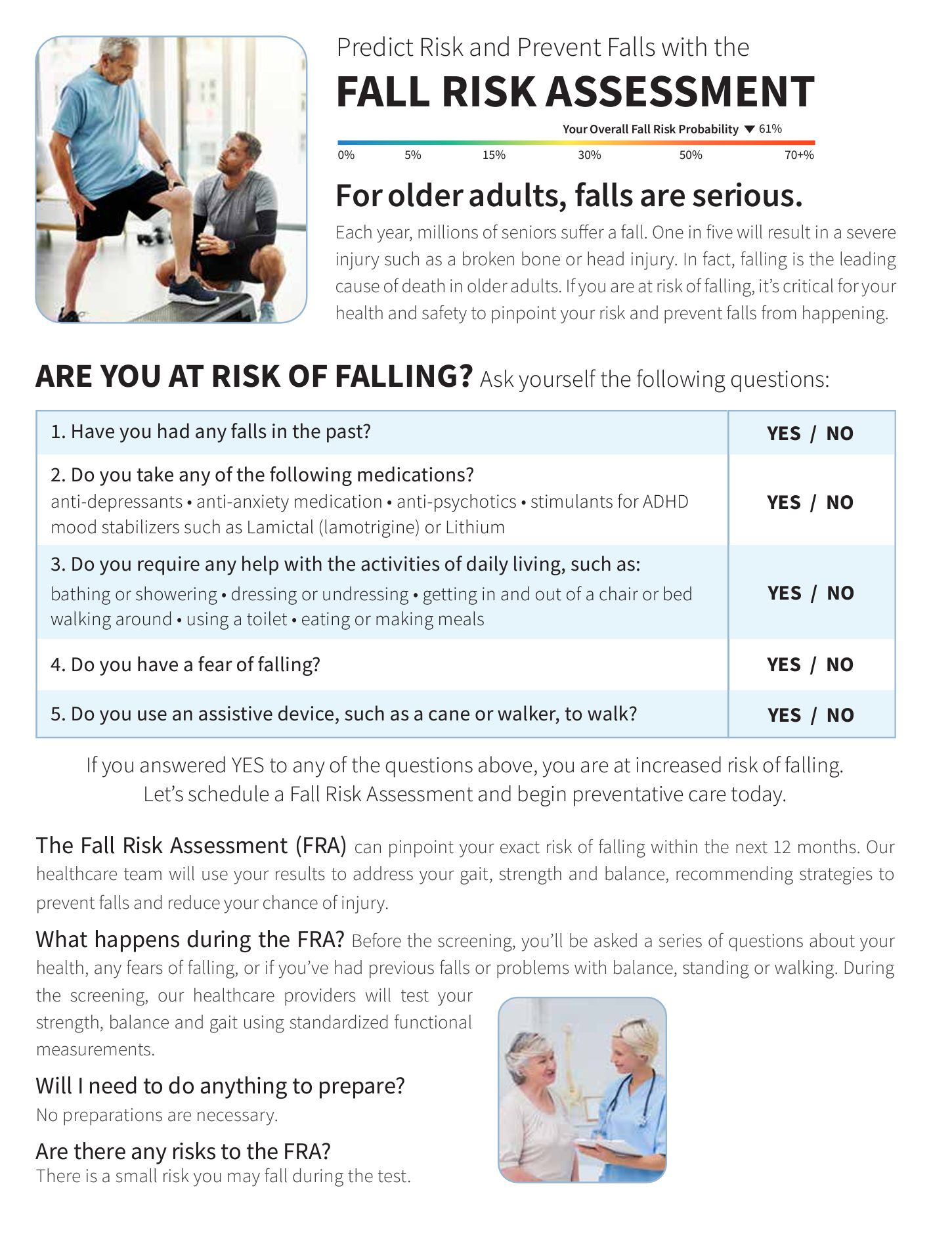What Does Dementia Fall Risk Do?
What Does Dementia Fall Risk Do?
Blog Article
The Ultimate Guide To Dementia Fall Risk
Table of ContentsDementia Fall Risk Things To Know Before You BuyThe Ultimate Guide To Dementia Fall RiskDementia Fall Risk - TruthsExcitement About Dementia Fall RiskFascination About Dementia Fall Risk
The FRAT has three areas: fall risk status, threat variable checklist, and action plan. A Loss Threat Status consists of information regarding history of current drops, medications, psychological and cognitive standing of the client - Dementia Fall Risk.If the client ratings on a threat variable, the equivalent variety of factors are counted to the individual's fall risk score in the box to the much ideal. If a patient's autumn danger score completes 5 or greater, the person goes to high threat for falls. If the individual ratings only four points or lower, they are still at some risk of dropping, and the registered nurse needs to utilize their best clinical analysis to take care of all loss risk elements as part of an alternative care plan.
These conventional techniques, in basic, help develop a secure environment that lowers unexpected drops and marks core preventative steps for all patients. Signs are vital for individuals at risk for drops.
All About Dementia Fall Risk
For example, wristbands must include the client's last and given name, date of birth, and NHS number in the UK. Information need to be printed/written in black against a white history. Just red shade must be made use of to signal special client condition. These referrals follow present growths in person identification (Sevdalis et al., 2009).
Things that are also much might call for the person to connect or ambulate needlessly and can potentially be a hazard or add to drops. Helps prevent the patient from going out of bed with no aid. Nurses reply to fallers' phone call lights much more promptly than they do to lights started by non-fallers.
Visual impairment can significantly trigger falls. Hip pads, when worn correctly, may reduce a hip fracture when loss takes place. Maintaining the beds closer to the flooring decreases the risk of falls and significant injury. Positioning the cushion on the flooring considerably decreases fall risk in some medical care setups. Low beds are designed to decrease the distance a patient drops after moving out of bed.
Get This Report about Dementia Fall Risk
Individuals that are tall and with weak leg muscular tissues that try to remain on the bed from a standing placement are likely to drop onto the bed because it's as well reduced for them to decrease themselves safely. If a tall client efforts to obtain up from a reduced bed without assistance, the client is most likely to drop back down onto the bed or miss the bed and fall onto the flooring.
They're made to promote timely rescue, not to avoid drops from bed. Distinct alarm systems can also remind the client not to rise alone. Making use of alarm systems can additionally be a substitute for physical restraints. In addition to bed alarms, boosted guidance Related Site for risky people also may assist avoid drops.

Individuals with a shuffling gait boost loss possibilities substantially. To lower autumn danger, shoes ought to be with a little to no heel, thin soles with slip-resistant step, and sustain the ankles.
Dementia Fall Risk - Questions
In a study, homes with sufficient illumination record less additional info falls (Ramulu et al., 2021). Enhancement in illumination at home might reduce fall rates in older grownups.

Caretakers work for assuring a safe and secure, protected, and safe environment. However, studies demonstrated very low-certainty evidence that caretakers lower loss threat in intense treatment health centers and just moderate-certainty that options like video clip surveillance can minimize sitter use without increasing fall threat, recommending that caretakers are not as beneficial as at first believed (Greely et al., 2020).
The Ultimate Guide To Dementia Fall Risk

Enhanced physical conditioning minimizes the danger for falls and restricts injury that is suffered when loss takes place. Land and water-based workout programs might be likewise beneficial on equilibrium and gait and consequently decrease the risk for drops. Water exercise may add a positive advantage on balance and stride for ladies 65 years and older.
Chair Rise Workout is a simple sit-to-stand workout that helps reinforce the muscles in the thighs and butts and enhances flexibility and self-reliance. The objective is to do Chair Surge exercises without making use of hands as the client ends up being stronger. See resources area for a detailed direction on just how to carry out Chair Increase workout.
Report this page